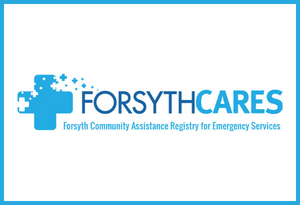- By Ashleigh Sloop
- Posted Friday, July 1, 2016
Summer Safety Tips
Fireworks Safety
Citizens should remember that fireworks, as enjoyable as they are to watch, can be dangerous and should only be handled by professionals. According to the U.S. Consumer Product and Safety Commission, there are nearly 9,000 emergency room-treated injuries associated with fireworks a year. You can enjoy a safe Fourth of July by following these safety tips:
- Never give fireworks to small children, and always follow the instructions on the packaging.
- Keep a supply of water close-by as a precaution.
- Make sure the person lighting fireworks always wears eye protection.
- Light only one firework at a time and never attempt to relight "a dud."
- Store fireworks in a cool, dry place away from children and pets.
- Never throw or point a firework toward people, animals, vehicles, structures or flammable materials.
- Stay at least 500 feet away from professional fireworks displays.
- Leave any area immediately where untrained amateurs are using fireworks.
Swim Safety
Use caution when swimming at a beach or pool. Sadly, most deaths from drowning occur within a few feet of safety. The best thing anyone can do to stay safe in and around the water is to learn to swim. The Red Cross has swimming courses for people of any age and swimming ability. To find out where lessons are offered, or to enroll in a CPR/AED or first aid course, contact your local Red Cross chapter.
If no lifeguard is on duty, do not let children swim unless they are accompanied by a responsible adult who knows lifesaving techniques and first aid.
Post CPR instructions and directions to call 911 or your local emergency number in the pool area.
Look around the pool area to be certain lifesaving devices are readily available for emergency use.
Be sure covers are installed on all drains of a swimming pool or in a wading pool. The suction created by the pool’s circulating pumps can be very dangerous unless it is reduced by covers.
Take frequent breaks (about once an hour) where everyone gets out of the water, drinks water, reapplies sunscreen (SPF 15 or higher) and rests.
If a child is missing, check the pool first. Go to the edge of the pool and scan the entire pool, bottom, and surface, as well as the surrounding pool area.
To reduce the risk of eye, ear, nose or throat infection from contaminated water, swim only in pools in which water quality is properly maintained.
The water should appear crystal clear, be continuously circulated and be maintained at a level that allows free overflow into the gutter or skimmer. There should not be a strong odor of ammonia or chlorine.
At the beach, take the following precautions:
Swim in a supervised, marked area with a lifeguard present, and swim with others. Never swim alone.
If you are caught in a rip current, swim parallel to the shore until you are out of the current. Once you are free, turn and swim toward shore. If you can't swim to the shore, float or tread water until you are free of the rip current and then head toward shore.
Watch out for the "dangerous toos" – too tired, too cold, too far from safety, too much sun, too much strenuous activity.
Look for water that is reasonably clear and free of floating materials and odors. Avoid swimming at beaches where there are large populations of ducks, geese or gulls. The waste produced by these birds causes high bacteria levels in the water.
Look for movement in the water; it helps keep the water clean. Do not swim in stagnant or still water.
Do not swim at any beach right after a heavy rain. Runoff following a heavy rain may result in a high bacteria level.
When diving at a beach, exercise extreme caution. Beach water is not as clear as water in a pool, so underwater obstructions may not be visible.
Avoid having beach water in your mouth or nose.
Driving Safety
Always shift your attention every few seconds, constantly scanning the road ahead and behind you. Never blankly stare ahead nor fix your gaze on one point on the road.
When passing an automobile, always glance at the ground beside the front wheel of the car you intend to pass. You will know instantly if the car is about to veer - giving you an extra few seconds to respond.
You should pull out into the opposite lane of traffic when passing while you are still well behind the car in front. This should give you some time and space to build up speed and will enable you to pull back into your own lane should the need arise. Never cut abruptly out of your lane into the opposite lane when passing.
Always signal your intentions with your brake lights, turn signals, horn and/or headlights so that other drivers will see you well before you change course.
Drivers should always “aim high” in steering. That is, you should glance frequently at points well ahead of you. Not only will this help your steering, but it will also help you check the position of vehicles in front of you as well as on-coming ones.
Never follow too closely. Remember that, as your speed increases, it takes you substantially longer to stop. Also remember that it’s good to have an extra cushion of space in front of you if you’re being tail-gated, on a slippery road, or in low visibility conditions.
Practice the golden rule when driving. Be courteous and tolerant of other drivers.
Following these precautions will help ensure the safety of everyone this holiday weekend and throughout the summer.











